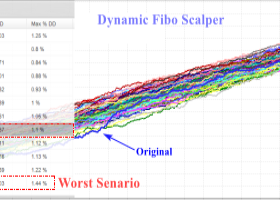
(01 MAY 2019)DAILY MARKET BRIEF 1:NZD tumbles as job report disappoints
It is going to be a very a slow day as most markets are closed for Labour Day. Only Australia, New Zealand, Denmark, Israel, the United Kingdom and the US are open for trading today. Despite the fact that the majority of traders are taking a day off, equities continued to climb to all time high in the US. The S&P 500 closed above the 2,940.9 threshold for the first time since September 21 2018, with futures edging higher this morning; we’ll most likely see another record high today. In the UK, equities were also gaining ground, while the pound sterling climbed back to 1.3055 against the greenback amid easing Brexit fears.
The Kiwi was the biggest mover in the Asian session amid a disappointing job report that hinted at a possible rate cut from the RBNZ. NZD/USD fell as much as 0.70% to $0.6629 after data showed that employment growth contracted 0.2% in the first quarter – versus median forecast of +0.5% and +0.1% in 4Q 2018 – while on a year-over-year basis employment growth increased 1.5% versus 2.2% expected and 2.3% in the previous quarter. However, the unemployment rate eased to 4.2% from 4.3%, thanks to a contraction in the participation rate, which eased from 70.9% to 70.4%.
The treasury market reacted moderately to the news, while money market rates rose. According to overnight indexed swap (OIS), the probability of a rate cut at the next meeting increased from 39% on Tuesday to 59% this morning. For the June meeting, the likelihood of a cut has jumped from 59% to 71%. The Reserve Bank of New Zealand is one of the central banks that has the leeway to cut interest rates to spur economic growth, while at the same time trying to give a lift to inflation. Given the slowdown in economic growth, stalling wage pressure and anaemic inflation pressures, we believe that a rate cut remains a live possibility.
Even though, the Federal Reserve would most likely adopt a dovish stance at its meeting today, we believe that the RBNZ would lean towards more accommodative monetary policy in a more aggressive way. Therefore, we anticipate that there is room for further Kiwi weakness with $0.65 as medium-term target.


